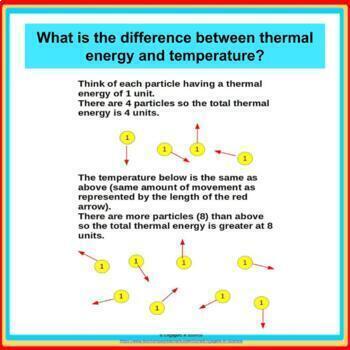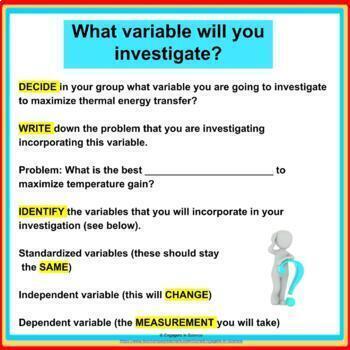Climate Change STEM project Thermal Solar Panel MS PS3-3 MS ESS3-3 MS ETS1-2,3,4
- Google Drive™ folder

Also included in
- This bundle includes four engaging NGSS aligned STEM projects where students are challenged to use the engineering design process to construct an earthquake resistant building, a thermal solar panel, a space station that withstands a collision, and a solar oven. This bundle supports the NGSS standarPrice $13.00Original Price $16.00Save $3.00
Description
This highly engaging engineering and design project (GOOGLE and PDF versions) allows students to design and construct a simple thermal solar panel, which they will then perform tests on to maximize thermal energy transfer.
The students first learn (or review) about the difference between temperature, thermal energy, and heat.
Next they are introduced to a thermal solar panel, how it works, and why it is one of the solutions to climate change.
Students then work in small groups to design and construct a simple thermal solar panel from simple everyday materials.
They test a variable in order to maximize the thermal energy transfer of their thermal solar panel.
They write a conclusion using the claim, evidence, reasoning (CER) structure.
Easily obtainable materials are used for these activities (see list below).
The science and engineering practices below are incorporated in this investigation:
Analyzing and interpreting data
Constructing explanations and designing solutions.
Developing and using models.
Planning and carrying out investigations.
Engaging in argument from evidence.
The cross cutting practices below are incorporated in this investigation:
System and system models
Energy and matter
This project supports the NGSS standards MS PS3-3, MS ESS3-3, MS ETS1-2, MS ETS1-3, MS ETS1-4.
Included in this resource:
Teacher slides (30 slides)
Detailed teacher notes (11 pages)
Printable student worksheets with activity instructions (7 pages)
Sample answers for student questions including a rubric for the CER conclusion,
Suggested materials needed for students (not all of these are necessary):
Cardboard tubes, different colored cardstock, different colored straws, plastic syringes (without the needles), different liquids (water, salt water, sugar water, vinegar), tubing, aluminum foil, tape, saran wrap, different colored paper.
You may also like:
Earthquake resistant building STEM 5E project MS ESS3-2 MS ETS1-4
Constructing a space station that can withstand a collision: STEM MS PS2-1
Designing and constructing a solar oven STEM MS PS3-3 MS ETS1-2,3,4
Designing and constructing a medicine cooler STEM MS PS 1-6 MS ETS1-2,3,4
Don't forget to give a review for this resource to earn TPT credits towards future purchases!
Email any questions you have with subject line “Questions on thermal solar panel stem project” to us at engagersinscience@gmail.com and we’ll be happy to answer them
Other teaching resources for sale in our Teachers Pay Teachers store can be accessed by using the link below:






